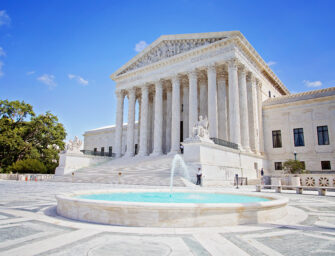World Ozone Day and the Success of the Montreal Protocol
September 16, 2017 was the International Day for the Preservation of the Ozone Layer. In fact, September 16, 2017 marked the 30th anniversary of the adoption of the Montreal Protocol. The protocol was aimed at regulating the production and use of chemicals that contribute to the depletion of Earth’s ozone layer. It entered into force on January 1, 1989, and has demonstrated the ability of the world’s nations to come together to solve an imminent environmental challenge. As a result of the Montreal Protocol (and its revisions), the most important ozone depleting gases have started to decrease and the Antarctic ozone hole, which occurs every spring, is slowing recovering.
Mario Molina and Sherwood Rowland identified chlorofluorocarbons (CFCs) as a growing source of chlorine in the stratosphere in the early 1970s. The resulting increased destruction of stratospheric ozone fast became a concern of scientists, since ozone absorbs ultraviolet light, and destruction of the protective layer in the stratosphere would lead to increases in skin cancer. However, it wasn’t until a 1985 paper by Joseph Farman, Brian Gardiner and Jon Shanklin announced the discovery of a 30% decrease of ozone in October over Antarctica research that the issue grew in importance on a wider scale. Subsequent research showed that the cause of the “ozone hole” was indeed due to emissions of CFCs. It was found that in the cold regions of the lower stratosphere over Antarctica, reactions on particles release the chlorine that is stored in “reservoir” species that do not participate in ozone destruction in the form of chlorine gas. When the sun rises over Antarctica in spring, photolysis of the chlorine gas molecule leads to the formation of reactive chlorine molecules that destroy ozone in a catalytic cycle. Soon after the discovery of the ozone hole, ozone depletion became accepted by the world’s leaders as a major problem and the protocol, after extensive negotiation, was adopted.
The halocarbons that contribute to ozone depletion are also extremely powerful greenhouse gases. Thus, their decrease is not only an important demonstration of how nation’s came together to craft a solution that successfully addressed both ozone depletion and an anthropogenically produced powerful greenhouse gas. We, in the United States had great hopes that the agreement reached in Paris in December 2015 would lead to similar reductions in other important greenhouse gases, most notably carbon dioxide. But, this year, President Trump withdrew the United States from the agreement. Nevertheless, the story of the ozone layer teaches us that agreement is both possible and attainable. I have no doubt that the continued study of climate change together with continued scientific observations, will eventually convince all nations of the need for reductions in the emissions of these harmful gases. Through the continued education of the public about climate change, in which many of our AGU members participate, we can will help ensure that that this shift will take place sooner rather than later before more damage is done.
In what has been a tough year for the geosciences, this is a welcome anniversary to celebrate.





I for one, would like to see a list published of all the industrial nations that have agreed to reduce or stop CFCs production.
Do these same nations police themselves in abiding to these “rules”? (or is the United States the only nation doing so)?